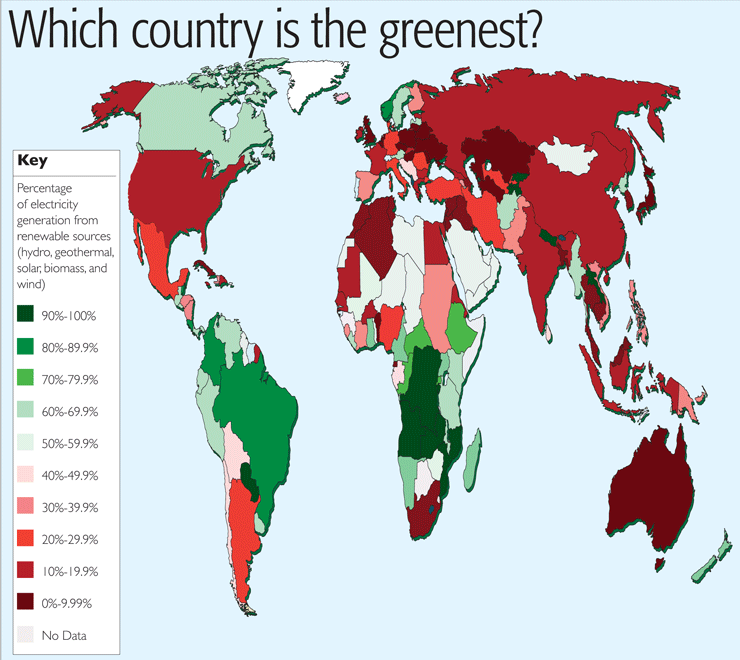
Renewable power generation can be split into two main categories – hydroelectric and everything else. Hydroelectric (generating power by the movement of water through dams) is the most established renewable resource and provides about 16% of the world’s total power.
Together the four major ‘hydro-powers’ – China, Brazil, Canada and America – account for more than 50% of global output.
China’s growth has been particularly impressive, with its hydroelectric output tripling between 2000 and 2010.
However, with many experts predicting a water-scarce 21st century, hydro-power is unlikely to increase its share of world electricity generation. Instead, growth will come from the other camp, a motley collection of geothermal (power generated from heat beneath the earth’s surface), solar, wind and marine energy.
Over the past decade, power generation from these renewable technologies has grown very quickly, albeit from a tiny base. Last year, the amount of energy generated from these sources grew by 17.7%, to provide 3.9% of the world’s electricity, up from 1.5% in 2000. In this group, wind is the dominant technology, contributing more than 50% of output. However, many expect solar to overtake this in the longer term.
As you would expect, most of the new renewable technologies are found in the developed world. However, a quick glance at the map shows that once you factor in hydro-power then renewable power generation is far more dispersed. Indeed, “the highest levels of ‘renewability’ are found [both] in some of the world’s richest countries (Norway) and some of the poorest (Democratic Republic of Congo)”, says Martin Lewis on the GeoCurrents blog.
One reason is geography. Hydro-power is most feasible in either mountainous countries with lots of rains, such as Norway and Albania, or lowland countries with dams across huge rivers, such as Paraguay. The other reason why some poorer countries appear to be big fans of renewable energy is less positive.
Due to “meagre electricity consumption”, the Central African Republic “ranks high on the map; over 80% of its electricity comes from hydro, yet its total hydro figure is a paltry 0.13 GWh”. That’s tiny. For example, in Britain hydro accounts for just 1.3% of electricity production, yet hydro plants produce 5,000 GWh.